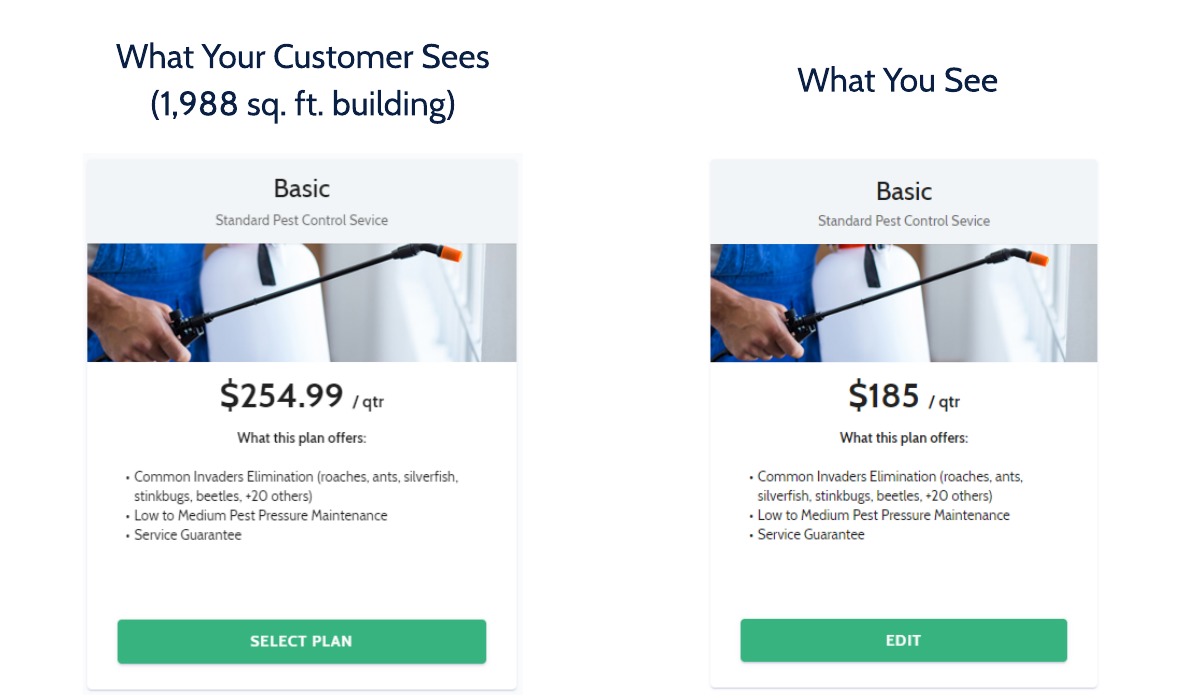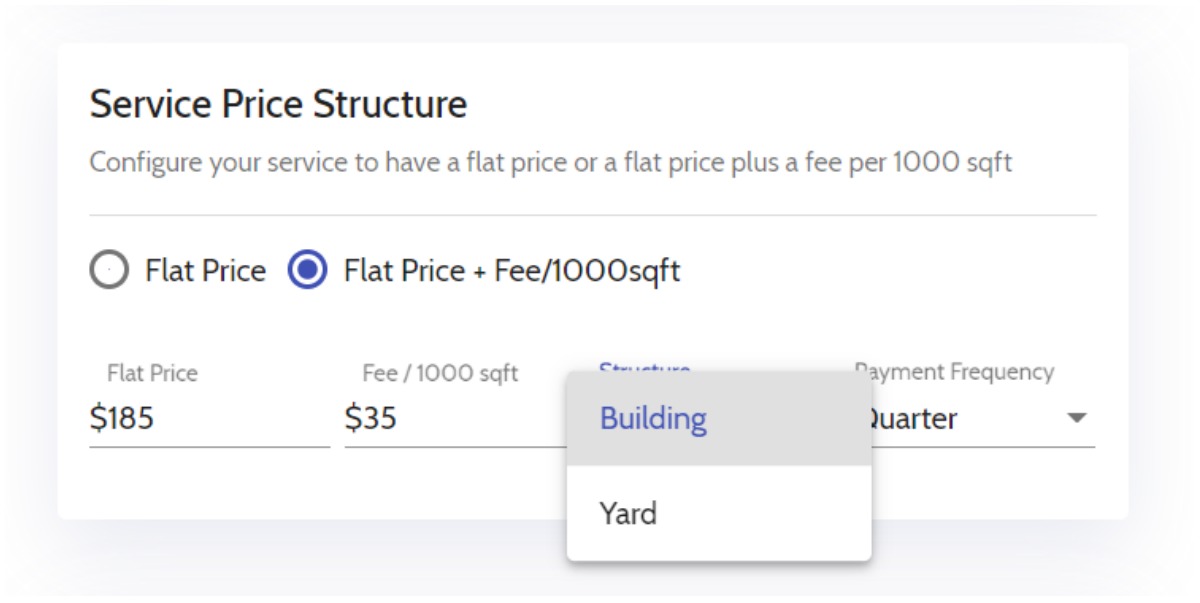Table of Contents
The Tiered Pricing Model
Within your own business, you may have seen that providing quality service and an excellent customer experience will only go so far. But shouldn’t that be enough? The truth is that consumer behavior is changing.
Customers still demand an exceptional experience from start to finish, but an often overlooked aspect of that positive customer experience is ease.
To make ordering pest control service online easy, you need to provide a platform where scheduling is simplified along with providing an easy to understand 3-tiered pricing model.
For years, it was thought that offering consumers more choices would lead to stronger sales. But as online shopping and instant gratification has grown, so has our desire to avoid choice overload.
It is actually harder for consumers to make a decision when there are too many options provided to them.
This is why fast food restaurants like Chick-Fil-A are narrowing their menu options to a handful of staple meals. Other high growth companies, like internet service providers, software services companies, credit card companies, and even streaming cable services offer narrow product options and packages.
This new pricing model is appearing in every industry, and other high growth pest control companies have also adopted this easy to understand and transparent tiered service plan.
To grow your pest control business faster while remaining competitive, you need to adopt a transparent, upfront pricing plan.
Offering hassle-free service scheduling while also making your service options easy for customers to understand will positively impact your customer’s experience.
This will allow your business to grow by increasing your sales by 80%, and will give you a consistent, standardized business model.
This method of providing your customers exact pricing will allow your business to efficiently grow.
How To Create Tiered Pricing That Facilitates Growth
To get the most out of the BugSquad software, you must have a good understanding of which services you want to offer and how to properly price your pest control services.
What To Offer
As a pest control business owner, you need to shift your business model to focus on your tiered services based on what is and what isn’t covered, plus a charge per 1,000 square feet.
Each service tier you provide offers more value than the tier before it. This is what is referred to as a Good-Better-Best model.
When creating your pest control service plans, break down what you consider an all-around pest control service entails. Save the big jobs like German roach cleanouts, termite control, or bed bug treatments for additional up-sells.
For example, your lowest tier may only offer control of occasional invaders. Your mid-tier service will then cover everything in your basic tier plus additional pests, such as wasps or spiders. Your highest tier includes every pest in the previous tiers, plus even harder to control pests, like ticks or ants.
The idea is to present your customer with three easy to understand services, with your mid-tier service being the most valuable for your customer and the most profitable for you.
This Goldilocks approach where your mid-tier service is just right will ensure that you increase your revenue while not making any operational changes.
Here’s a real-world example from the nationally recognized pest control company Truly Nolen.

Know Your Cost
To optimize your tiered pricing structure for highest profitability, you first need an understanding of the cost of doing pest control.
The largest pest control companies standardize their business so that they know exactly what their cost to operate is, allowing them to scale and grow much easier. You must consider your fixed and variable costs.
Your fixed cost is the operational cost of running your business, regardless of the size of the property you are treating or the pests being controlled. These are things like the distance driven from one service location to another, your pest control technician’s wages, vehicle and equipment maintenance, business overhead, insurance, etc.
Your variable cost is the cost that will change from service to service. This is mainly affected by the time it takes to perform the service, the chemical and amount used, and the size of the property you are treating.
Know Your Breakeven Point
To build profit and grow your pest control business, you need to know your break even point. This is where the revenue you have generated breaks even with the cost of operating your business.
Once you know what your break even point is, you can account for that and strategically set your service prices to allow for optimized profitability. The profit can then be used to reinvest in your business, leading to growth.
The BugSquad app makes it easy for pest control business owners to price their services so that it is easy for customers and technicians to understand.
When creating a service, you set the flat price to your desired amount and then add a charge based on every 1,000 square feet of the property. You do have the ability to limit services to only charge for the flat price, but for faster growth and higher revenue you will want to price with the property’s size in consideration.
More Pest Control Pricing Tips
Initial Service Discounts
BugSquad was designed with 2 main goals in mind: to help increase your pest control sales and increase your revenue. When setting up and pricing your services in your BugSquad account, it is unnecessary to factor in initial service discounts.
Seeing upfront, transparent pricing helps customers make an informed decision and will communicate the value you will be bringing with each service. Offering discounts might sound like a good plan in theory, but what you are actually doing is lessening the value of your services, complicating your business model, and hurting your profit margins.
What about the initial service charge? Because BugSquad works as an initial sales tool for your pest control company, you can think of the initial service charge as the flat fee in your Services set up.

When you include your charge per 1,000 square feet, the price for the total service will be seen by your customer, so they know exactly what the service covers and the price of that service.

Once you have performed the service and established them as a customer, you can then adjust the terms of their service and update their pricing in your operating software however you see fit. But it is recommended that you continue to charge them based on the square footage of their property.
Competitor Research
To stay competitive, you need to have an idea of what your direct competitors are offering and charging for their services. This not only includes their competitive pricing models, but also what sets them apart, like their services or reputation.
The easiest way to understand your competitors is to simply call them and ask for a quote or check their website.
When you call as a potential customer of theirs you will see how they present themselves, the promises they make to their customers, and what they will charge to deliver on those promises.
Structural vs. Turf & Ornamental
BugSquad was designed for both structural and turf & ornamental pest control companies.
When setting up and pricing your services, you have the option to price on the square footage of your customer’s building or yard/turf area.
For structural pest control applications, set your square footage price to be based on the property’s building so that regardless of lot size, pricing will be adjusted accordingly. For turf & ornamental applications, simply set the price to be based on the yard size.

To provide a better ordering experience for your customers, be sure to accurately describe what each individual service offers so that there is no confusion on your or your customer’s end.
What about linear feet for termite trenching applications?
You can convert the square foot value of a home by taking its square root and multiplying it by 4. We suggest adding about 20% on top of that to account for any deviation from a standard rectangular shape.
Here is a chart with various area sizes and their respective linear feet to help you get an idea:

Knowing Your Customer's Lifetime Value
Knowing your customer’s lifetime value (LTV) will help you better understand how much revenue/profit your customer generates for your business during their time as your customer. Once you understand your LTV, you can work on improving it for increased profit potential.
An easy way to determine your LTV is to look at a current customer’s service history. You will want to look at how much revenue you get from a customer, how often they pay for service, and how long they remain a customer.
For example, let’s say that a residential customer’s average billed service is $150 per quarter. Because it is a quarterly service they will pay you 4 times a year, and they remain a customer for 2 years.
Average revenue of service = $150
Number of times a customer will pay for service = 4
Average length of customer relationship in years = 2
So your LTV for a customer would be $1,200. (150 x 4 x 2 = 1,200).
With BugSquad, we require customers to sign up for recurring revenue because it is the most valuable and consistent thing for your business.
We recommend that when you create your Services, always set the payment frequency for recurring service. Do not run your business for one-time services, like doing a single German roach clean out. This can instead be used as a high revenue Add-on.
Commercial Properties
While the BugSquad app was designed to be an initial sales tool for residential customers, you do have the option of limiting or accepting commercial property services.
You can choose to accept commercial services at any time within your back end Admin panel. In your account settings, beneath the Display Time Slots at Checkout toggle you will see an Allow Commercial Property Service toggle.

Simply turn that option on or off for your business needs.
If you decide not to accept commercial properties through the app, your integrated BugSquad app will intelligently recognize the commercial property when the Property Analysis Tool runs. A notice will display to your prospective customer asking that they instead call you to discuss commercial services.